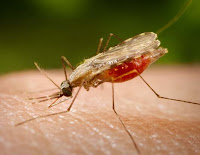Scientists In Singapore Discover New Drug Against Malaria

Scientists from the Singapore Immunology Network (SIgN) of Singapore’s Agency of Science, Technology and Research’s (A*STAR) led by Dr Laurent Renia have made a breakthrough concerning a drug that is effective against malaria.
Their work, carried out with industry leader Novartis, the Swiss Tropical and Public Health Institute, and The Scripps Research Institute, was published in top scientific journal Science.
The discovery and validation of the new drug, spiroindolone NITD609, is timely as many strains of drug-resistant malaria are emerging.
Dr Renia and his team of scientists from SIgN played a significant role in the testing and validation of the drug. With the help of a pioneering technology, Dr Renia tested spiroindolone NITD609 against field isolates – samples of the parasite isolated directly from patients.
This enabled researchers to obtain a clearer picture of how the drug would perform in a real life situation. In addition, Dr Renia’s team also tested the drug against a strain of malaria, P. vivax, that cannot be cultured in a lab, showing that the drug was also effective against another important species of malaria parasites.
Said Dr Renia, “We are excited to be able to contribute to the fight against malaria with our expertise and know-how. Our technology enabled Novartis to obtain a clearer picture of how their drug might perform in the field, giving them a better idea of the effectiveness of their spiroindolone NITD609. Moving forward, we will continue to collaborate with Novartis in the necessary steps to bring the drug closer to a medical reality. ”
Prof Paola Castagnoli, Scientific Director of SIgN, commented, “Malaria is a threat that kills approximately one child every 45 seconds. This kind of collaboration between SIgN and Novartis represents how the talent and know-how of our researchers can be applied to problems as pressing and urgent as malaria. SIgN will continue to explore ways in which we can work together with the private sector (biotech and pharma companies) to fight against human infectious diseases.”
Dr Renia and his team plan to continue the fight against malaria by assisting Novartis in the further testing of other possible drug candidates against field isolates.
They are also planning to further develop SIgN’s expertise in technologies that can be used in the fight against malaria by developing a new, fast, and robust assay using portable flow cytometer to test drugs in field conditions
read more» Read more...


















